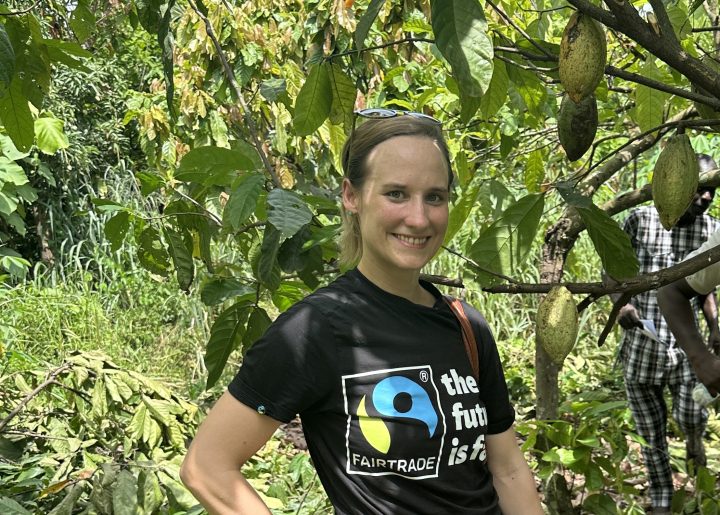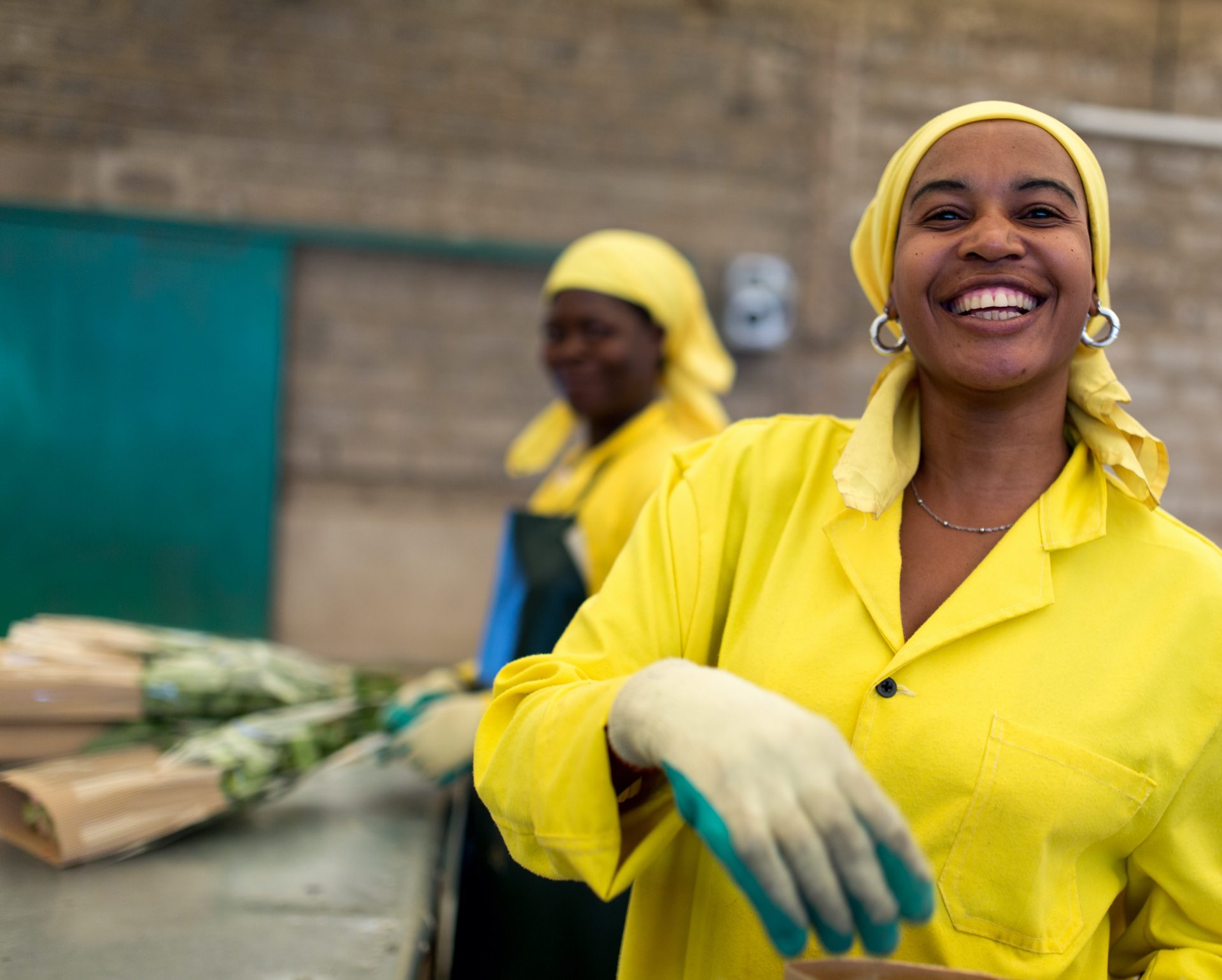Realizing Cocoa’s Full Potential in the Ivory Coast
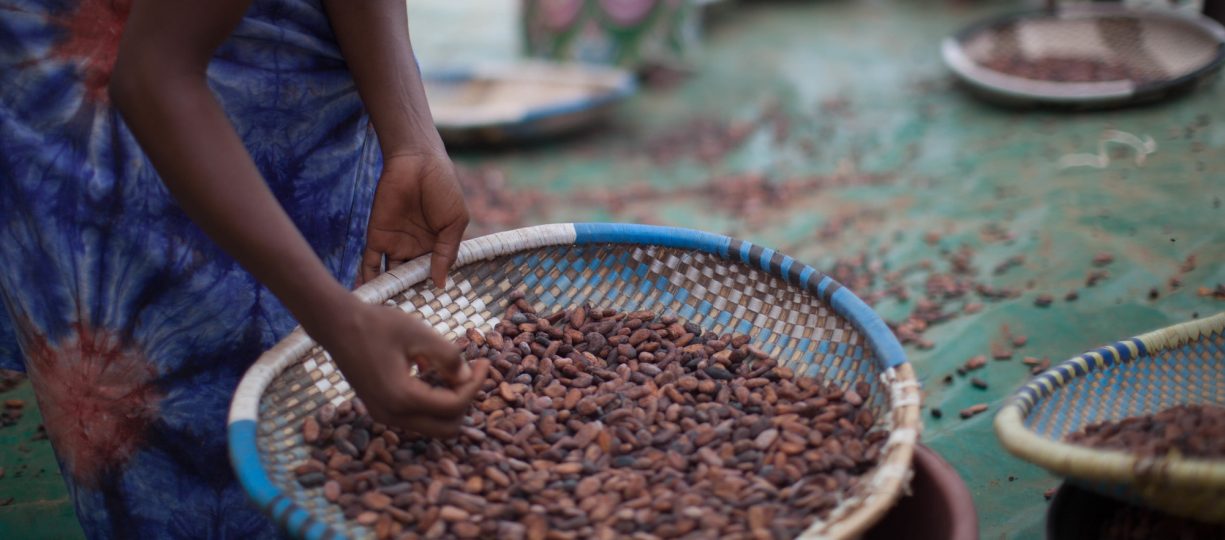
This week, Fairtrade America and Endangered Species Chocolate are visiting cacao farmers in the Ivory Coast. Bryan Lew gives a window into what trips like this are like.
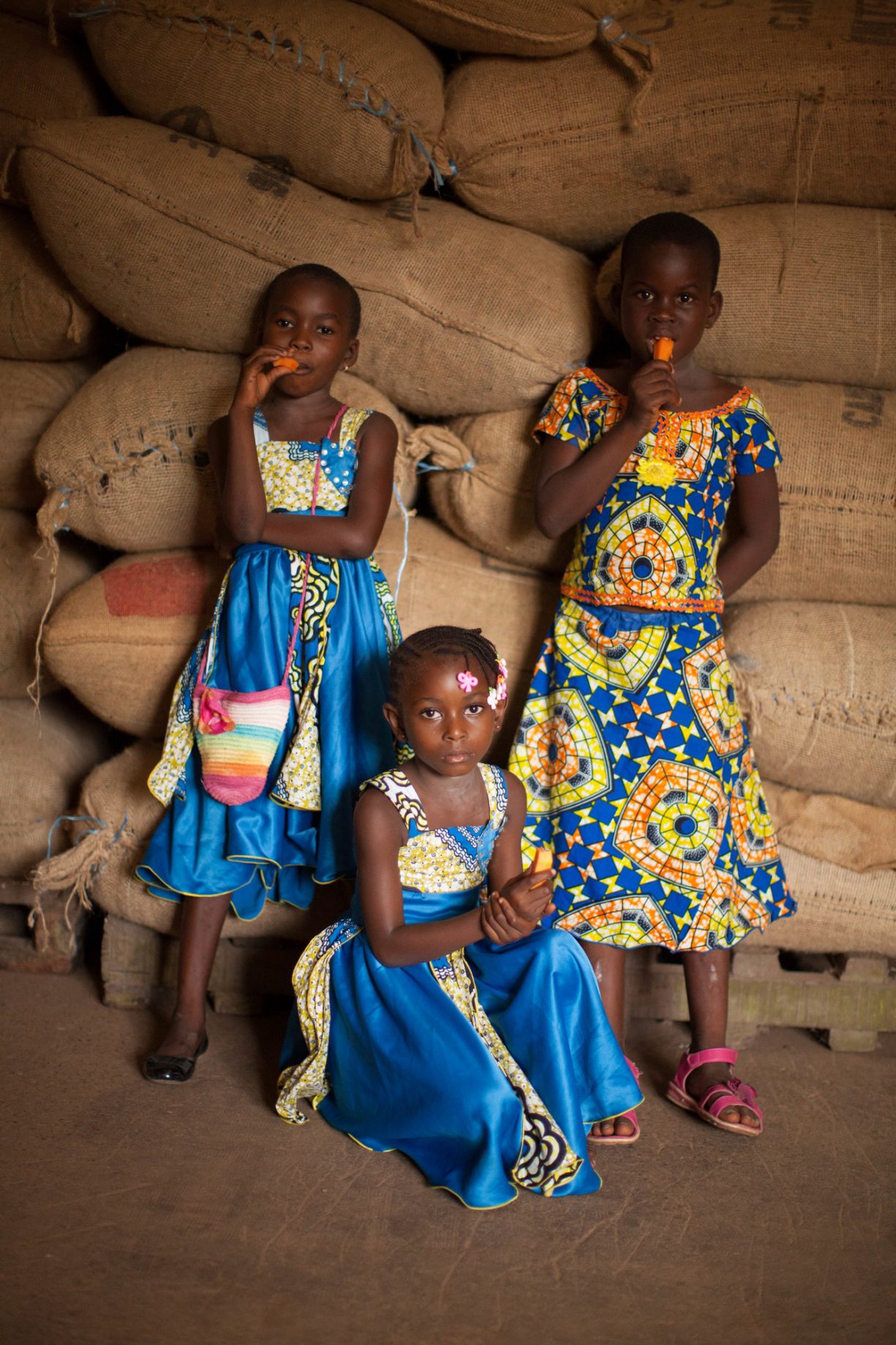
We woke early this morning to leave for a visit with the leaders of SCINPA, a cooperative selling their cacao to Endangered Species Chocolate. I’m joined by Curt Vander Meer and Ryan Gomes of Endangered Species Chocolate, Hans Theyer of Fairtrade America, and Sean Hawkey, a well-traveled photographer from the UK.
After a two hour drive and 10 to 15 minutes of semi-awkward introductions (they speak French and my French is even worse than my Spanish), things got moving. SCINPA was founded in 2003 and became Fairtrade certified just last year. The co-op has 2,500 members, 300 of whom are women. There are two women in leadership roles at the co-op. Of their 11 staff, 3 are women.
Most members have farms that are 12-24 acres and 85% of them own their own land. On average, their members earn 90% of their income farming cacao, which makes them highly dependent on this income and vulnerable to fluctuations in price. There is probably no other place in the world that Fairtrade can have as much of an impact on people’s lives as here, because almost all of their income comes from a crop that is solely for export.
In 2013, they set very aggressive 5-year growth goals to quadruple their production, but they are currently behind on this goal due to the effects of climate change (a drought wreaked havoc on their crops last year, something that is becoming increasingly common).
The benefits of being Fairtrade Certified
With the Fairtrade Premium earned on their sales, the farmers elected to dedicate 30% to paying off old debt, 15% on inputs (fertilizer and others for farmers), and dedicated 55% to finishing construction on a school for the community and begin another one. Their dream over the next five years is to build as many schools as they are able. They have identified this as one of the keys to stopping child labor on the farms in their communities (if the school is far away, the kids quit going and end up working on the farm). Their next big goal is to bring clean water for all, and lastly to get enough financing opportunities to become fully self-funded.
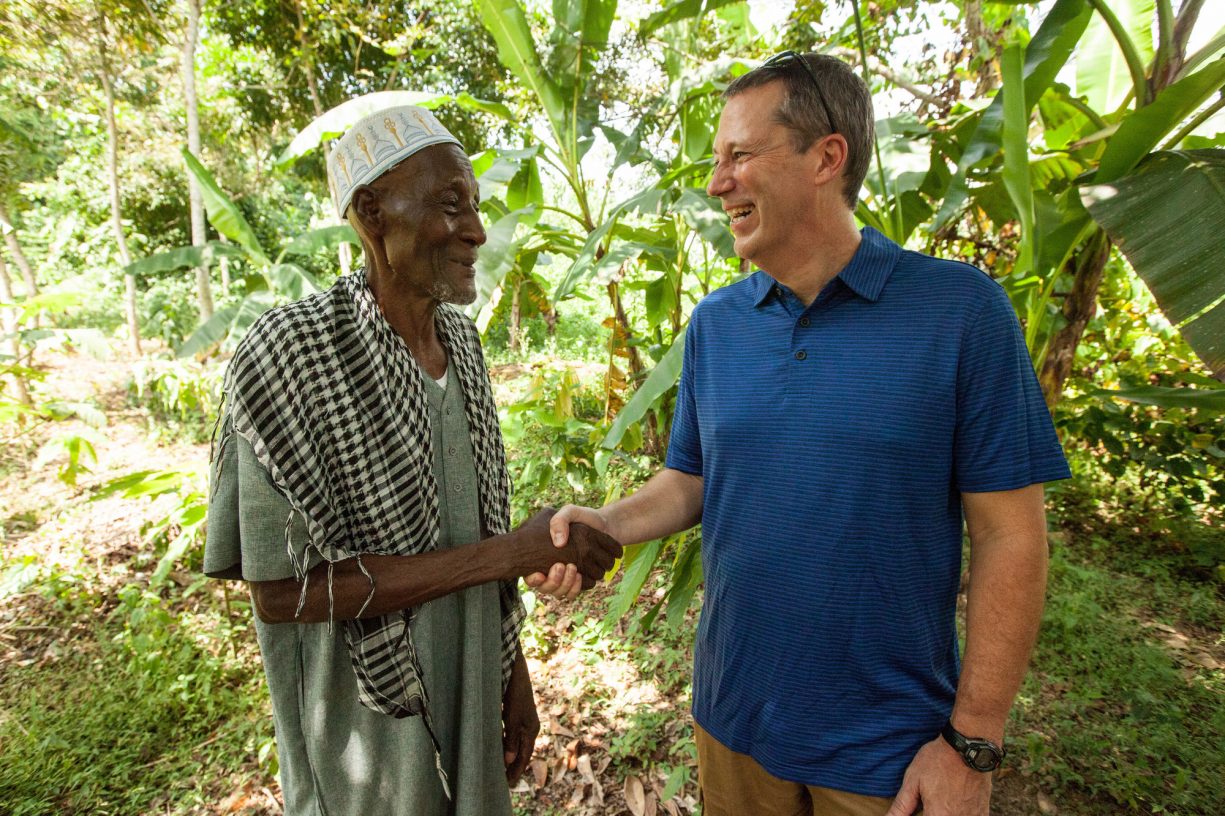
Since becoming Fairtrade certified, SCINPA’s member engagement has been much higher. Members feel as though they are decision-makers and because the co-op is audited by Fairtrade, they feel confident that their voices will be heard.
After our visit in the office, we headed out to the family farm of Moussa, the Chairman of SCINPA’s Board and had the opportunity to meet his 95-year-old father, who was in the cacao field. When asked about Fairtrade, Moussa’s father said he felt it was very important because it allowed them to build schools so his grandchildren could get an education (at right, Curt of Endangered Species Chocolate meets Moussa’s father).
While in the field, we also got to taste cacao beans straight out of the pods off the trees. The flesh around the beans is sweet and citrusy. After about an hour on the farm, we headed to a women-owned nursery that was started through funds from the co-op. The women there were energetic, extremely proud of their work and highly engaging.
Investing in the Future
From there we visited one of the schools and even though it was Sunday, the principal came to show us around and one of the teachers came to open her classroom so we could see it in more detail. The pride they take in their schools is inspiring. They have six classrooms at the school we visited. The smallest classroom can seat 52 students, the largest holds 59.
While we were there a gaggle of kids showed up and they were thrilled to talk and take pictures and make videos of each other with our cameras. We had to pry our photographer, Sean Hawkey, away from the school. He has made hundreds of similar trips around the world and in his opinion, this was one of the finest examples of Fairtrade Premium spending he’d ever seen.
From the school, we drove a short distance to a place that had tables setup in the shade and as we arrived they brought out platters of smoked and grilled chicken, two kinds of yams, rice, sauces, a second chicken in sauce and drinks. There were probably 12 to 15 of us at the table all sharing together. The food was wonderful, the company amazing. We thanked them profusely, they thanked us, we thanked them again, they thanked us… you get the idea. Then it was time to depart for a three-hour drive further East where we would visit two more cooperatives the next day.
It was a loooooooong day, but I can honestly say I haven’t felt more connected to our mission at any other time in my years with Fairtrade America.
We’re in this together
Fairtrade America partners with brands on the journey to certification and beyond. We can help with everything from finding a certified supply chain to marketing your newly certified product.
Get in Touch



